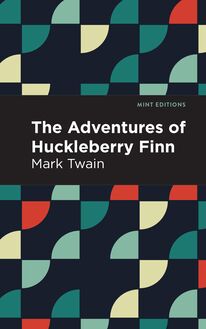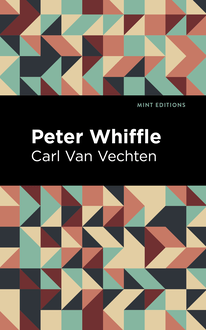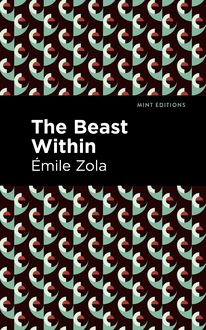-
 Univers
Univers
-
 Ebooks
Ebooks
-
 Livres audio
Livres audio
-
 Presse
Presse
-
 Podcasts
Podcasts
-
 BD
BD
-
 Documents
Documents
-
- Cours
- Révisions
- Ressources pédagogiques
- Sciences de l’éducation
- Manuels scolaires
- Langues
- Travaux de classe
- Annales de BEP
- Etudes supérieures
- Maternelle et primaire
- Fiches de lecture
- Orientation scolaire
- Méthodologie
- Corrigés de devoir
- Annales d’examens et concours
- Annales du bac
- Annales du brevet
- Rapports de stage
La lecture à portée de main
Vous pourrez modifier la taille du texte de cet ouvrage
Découvre YouScribe en t'inscrivant gratuitement
Je m'inscrisDécouvre YouScribe en t'inscrivant gratuitement
Je m'inscrisEn savoir plus
Vous pourrez modifier la taille du texte de cet ouvrage
En savoir plus

Description
Blood and Sand (1908) is a novel by Vicente Blasco Ibáñez. Published at the height of his career as a popular Spanish author, Blood and Sand was adapted into a 1916 silent film by the author himself and was remade three times, in 1922, 1941, and 1989. Predating Ernest Hemingway’s celebrated depictions of bullfighting by over a decade, Blasco Ibáñez’s novel remains an essential work of literature portraying one of Spain’s oldest and most controversial traditions. “Scarcely had the second bull appeared when Gallardo, by his activity and his desire to shine, seemed to fill the whole plaza. His cape was ever near the bull's nose. A picador of his cuadrilla, the one called Potaje, was thrown from his horse and lay unprotected near the horns, but the maestro, grabbing the beast's tail, pulled with herculean strength and made him turn till the horseman was safe. The public applauded, wild with enthusiasm.” Born into poverty, Juan Gallardo knows what it means to struggle and survive. From the streets of Spain, he rises to become one of the nation’s greatest bullfighters, a man for whom danger is merely an opportunity to showcase his talent. As lovers and fans flock to his side, Juan learns a new kind of danger, one with far more uncertain consequences than those he faces as a torero. With stunning depictions of the bullfighting ring and stirring evocations of urban life in Madrid and Seville, Blood and Sand is a masterpiece of twentieth century literature. With a beautifully designed cover and professionally typeset manuscript, this edition of Vicente Blasco Ibáñez’s Blood and Sand is a classic of Spanish literature reimagined for modern readers.
Sujets
Informations
| Publié par | Mint Editions |
| Date de parution | 16 novembre 2021 |
| Nombre de lectures | 0 |
| EAN13 | 9781513223742 |
| Langue | English |
| Poids de l'ouvrage | 1 Mo |
Informations légales : prix de location à la page 0,0500€. Cette information est donnée uniquement à titre indicatif conformément à la législation en vigueur.
Extrait
Blood and Sand
Vicente Blasco Ib áñez
Blood and Sand was first published in 1908.
This edition published by Mint Editions 2021.
ISBN 9781513299662 | E-ISBN 9781513223742
Published by Mint Editions®
minteditionbooks.com
Publishing Director: Jennifer Newens
Design & Production: Rachel Lopez Metzger
Project Manager: Micaela Clark
Translated by: Mrs. W. A. Gillespie
Typesetting: Westchester Publishing Services
C ONTENTS B LASCO I BÁÑEZ AND “ S ANGRE Y A RENA” I II III IV V VI VII VIII IX X G LOSSARY
B LASCO I BÁÑEZ AND “ S ANGRE Y A RENA”
O ne of the secrets of the immense power exercised by the novels of Vicente Blasco Ib áñ ez is that they are literary projections of his dynamic personality. Not only the style, but the book, is here the man. This is especially true of those of his works in which the thesis element predominates, and in which the famous author of The Four Horsemen of the Apocalypse appears as a novelist of ideas-in-action. It is, of course, possible to divide his works into the “manners” or “periods” so dear to the literary cataloguers, and it may thus be indicated that there are such fairly distinct genres as the regional novel, the sociological tale and the psychological study; a convenient classification of this sort would place among the regional novels such masterpieces as La Barraca and Cañas y Barro ,—among the novels of purpose such powerful writings as La Catedral , La Bodega and Sangre y Arena ,—among the psychological studies the introspective La Maja Desnuda . The war novels, including The Four Horsemen and the epic Mare Nostrum , would seem to form another group. Such non-literary diversions as grouping and regrouping, however, had perhaps best be left to those who relish the task. It is for the present more important to note that the passionate flame of a deeply human purpose welds the man’s literary labors into a larger unity. His pen, as his person, has been given over to humanity. He is as fearless in his denunciation of evil as he is powerful in his description of it; he has lived his ideas as well as fashioned them into enduring documents; he reveals not only a new Spain, but a new world.
While Blasco Ib áñ ez does not desire to be known as regional novelist—nor does a complete view of his numerous works justify such a narrow description—he has nevertheless in his earlier books made such effective and artistic use of regional backgrounds that some critics have found this part of his production best. Speaking from the standpoint of durable literary art, I am inclined to such a view. Yet is there less humanitarian impulse in The Four Horsemen than in these earlier masterpieces? Whether Blasco Ib áñ ez’s background is a corner in Valencia, a spot on the island of Majorca, a battlefield in France, or Our Sea the Mediterranean,—the cradle of civilization,—his real stage is the human heart and his real actor, man.
Upon his election to the Cortes,—Spain’s national parliamentary assembly,—Blasco Ib áñ ez naturally turned, in his novels, to a consideration of political and social themes. Beginning with La Catedral (The Shadow of the Cathedral), one of the most powerful modern documents of its kind, he took up in successive novels the treatment of such vital subjects as the relation of Church to State, the degrading and backward influence of drunkenness, the problem of the Jesuits, the brutality and psychology of the bull-fight. In all of these works the writer is characterized by fearlessness, passion and even vehemence; yet his ardor is not so strong as to lead him into conscious unfairness. A fiery advocate of the lowly, he yet can cast their shortcomings into their teeth; they, in their ignorance, are accomplices in their own degradation, partners in the crimes that oppress them. They slay the leaders whom they misunderstand; they are slow to organize for the purpose of bursting their shackles. This appears in La Barraca (one of the so-called regional novels) no less than in La Catedral , La Bodega and other books of the more purely sociological series. In varying degree, applied to a nation rather than to a class, this fearless attitude is evident in Los Cuatros Jinetes del Apocalipsis and Mare Nostrum , in which is assailed the neutrality of Spain during the late and unlamented conflict. This unflinching determination to see the truth and state it is also discernible in a most personal manner; the sad inability of such noble spirits as Gabriel Luna ( La Catedral ) or Fernando Salvatierra ( La Bodega ) to solace themselves with a belief in future life is perhaps an exteriorization of the author’s own views, even as these revolutionary spirits are, in part, embodiments of himself.
In the bulk of the noted Spaniard’s books there is waged, on both a large scale and a small, the ceaseless, implacable struggle of the new against the old. This eternal battle early formed an appreciable part of even the writer’s short fiction. His old seamen look with scorn upon the steam-vessels that replace their beloved barks; his vintners regret the passing of the good old days when sherry sold high and had not yet been ousted from the market by cheap, new-fangled concoctions; his toilers begin to rebel against ecclesiastical authority; some of his heroes are even capable of falling in love with Jewesses or with women below their station ( Luna Benamor , Los Muertos Mandan ); everywhere is the fermentation of transition. His protagonists,—red-blooded, vigorous, determined,—usually fail at the end, but if there are victories that spell failure, so are there failures that spell victory. It is the clash of these ancient and modern forces that strikes the spark which ignites the author’s passion. He is with the new and of it, yet rises above blind partisanship. His dominant figures, chiefly men, are representative of the Spain of tomorrow; not that ma ñ ana which has so long (and often unjustly) been a standing reproach to Iberian procrastination, but a tomorrow of rebirth, of rededication to lofty ideals and glowing realities.
In Sangre y Arena ( Blood and Sand , written in 1908) Blasco Ib áñ ez attacks the Spanish national sport. With characteristic thoroughness, approaching his subject from the psychological, the historical, the national, the humane, the dramatic and narrative standpoint, he evolves another of his notable documents, worthy of a place among the great tracts of literary history.
His process, like his plot, is simple; whether attacking the Church or the evils of drink, or the bloodlust of the bull ring, his methods are usually the same. He provides a protagonist who shall serve as the vehicle or symbol of his ideas, surrounding him with minor personages intended to serve as a foil or as a prop. He fills in the background with all the wealth of descriptive and coloring powers at his command—and these powers are as highly developed in Ib áñ ez, I believe, as in any living writer. The beauty of Blasco Ib áñ ez’s descriptions—a beauty by no means confined to the pictures he summons to the mind—is that, at their best, they rise to interpretation. He not only brings before the eye a vivid image, but communicates to the spirit an intellectual reaction. Here he is the master who penetrates beyond the exterior into the inner significance; the reader is carried into the swirl of the action itself, for the magic of the author’s pen imparts a sense of palpitant actuality; you are yourself a soldier at the Marne, you fairly drown with Ulises in his beloved Mediterranean, you defend the besieged city of Saguntum, you pant with the swordsman in the bloody arena. This gift of imparting actuality to his scenes is but another evidence of the Spaniard’s dynamic personality; he lives his actions so thoroughly that we live them with him; his gift of second sight gives us to see beyond amphitheatres of blood and sand into national character, beyond a village struggle into the vexed problem of land, labor and property. Against this type of background develops the characteristic Ib áñ ez plot, by no means lacking intimate interest, yet beginning somewhat slowly and gathering the irresistible momentum of a powerful body.
Juan Gallardo, the hero of Blood and Sand , has from earliest childhood exhibited a natural aptitude for the bull ring. He is aided in his career by interested parties, and soon jumps to the forefront of his idolized profession, without having to thread his way arduously up the steep ascent of the bull fighters’ hierarchy. Fame and fortune come to him, and he is able to gratify the desires of his early days, as if the mirage of hunger and desire had suddenly been converted into dazzling reality. He lavishes largess upon his mother and his childless wife, and there comes, too, a love out of wedlock.
But neither his powers nor his fame can last forever. The life of even Juan Gallardo is taken into his hands everytime he steps into the ring to face the wild bulls; at first comes a minor accident, then a loss of prestige, and at last the fatal day upon which he is carried out of the arena, dead. He dies a victim of his own glory, a sacrifice upon the altar of national blood-lust. That Do ñ a Sol who lures him from his wife and home is, in her capricious, fascinating, baffling way, almost a symbol of the fickle bull-fight audience, now hymning the praises of a favorite, now sneering him off the scene of his former triumphs.
The tale is more than a colorful, absorbing story of love and struggle. It is a stinging indictment brought against the author’s countrymen, thrown in their faces with dauntless acrimony. He shows us the glory of the arena,—the movement, the color, the mastery of the skilled performers,—and he reveals, too, the sickening other side. In successive pictures he mirrors the thousands that flock to the bull fights, reaching a tremendous climax in the closing words of the tale. The popular hero has just been gored to death, but the crowd, knowing
-
 Univers
Univers
-
 Ebooks
Ebooks
-
 Livres audio
Livres audio
-
 Presse
Presse
-
 Podcasts
Podcasts
-
 BD
BD
-
 Documents
Documents
-
Jeunesse
-
Littérature
-
Ressources professionnelles
-
Santé et bien-être
-
Savoirs
-
Education
-
Loisirs et hobbies
-
Art, musique et cinéma
-
Actualité et débat de société
-
Jeunesse
-
Littérature
-
Ressources professionnelles
-
Santé et bien-être
-
Savoirs
-
Education
-
Loisirs et hobbies
-
Art, musique et cinéma
-
Actualité et débat de société
-
Actualités
-
Lifestyle
-
Presse jeunesse
-
Presse professionnelle
-
Pratique
-
Presse sportive
-
Presse internationale
-
Culture & Médias
-
Action et Aventures
-
Science-fiction et Fantasy
-
Société
-
Jeunesse
-
Littérature
-
Ressources professionnelles
-
Santé et bien-être
-
Savoirs
-
Education
-
Loisirs et hobbies
-
Art, musique et cinéma
-
Actualité et débat de société
- Cours
- Révisions
- Ressources pédagogiques
- Sciences de l’éducation
- Manuels scolaires
- Langues
- Travaux de classe
- Annales de BEP
- Etudes supérieures
- Maternelle et primaire
- Fiches de lecture
- Orientation scolaire
- Méthodologie
- Corrigés de devoir
- Annales d’examens et concours
- Annales du bac
- Annales du brevet
- Rapports de stage

















